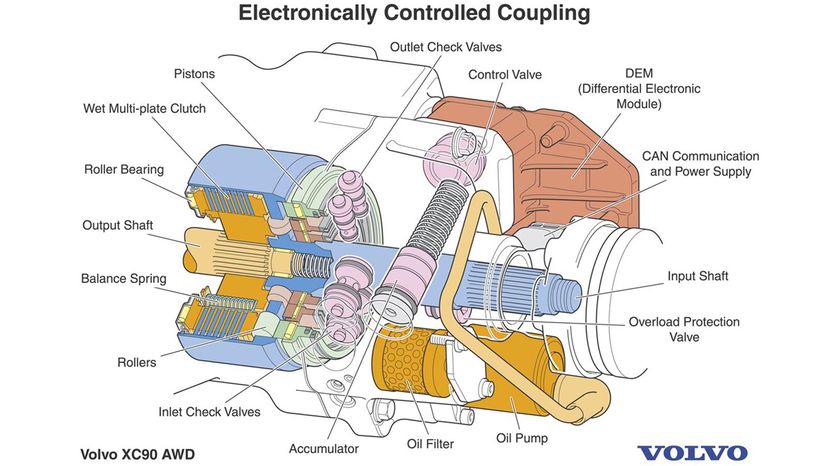Viscous Coupling

The viscous coupling is often found in all-wheel-drive vehicles. It is commonly used to link the back wheels to the front wheels so that when one set of wheels starts to slip, torque will be transferred to the other set. Mechanically, it works similarly to the torque converter that transfers power from an engine into an automatic transmission.
The viscous coupling has two sets of plates inside a sealed housing that is filled with a thick fluid. One set of plates is connected to each output shaft. Under normal conditions, both sets of plates and the viscous fluid spin at the same speed.
Advertisement
When one set of wheels tries to spin faster, perhaps because it is slipping, the set of plates corresponding to those wheels spins faster than the other. The viscous fluid, stuck between the plates, tries to catch up with the faster disks, dragging the slower disks along. This transfers more torque to the slower-moving wheels — the wheels that are not slipping.
When a car is turning, the difference in speed between the wheels is not as large as when one wheel is slipping. The faster the plates are spinning relative to each other, the more torque the viscous coupling transfers. The coupling does not interfere with turns because the amount of torque transferred during a turn is so small. However, this also highlights a disadvantage of the viscous coupling: No torque transfer will occur until a wheel actually starts slipping.
A simple experiment with an egg will help explain the behavior of the viscous coupling. If you set an egg on the kitchen table, the shell and the yolk are both stationary. If you suddenly spin the egg, the shell will be moving at a faster speed than the yolk for a second, but the yolk will quickly catch up.
To prove that the yolk is spinning, once you have the egg spinning, quickly stop it and then let go — the egg will start to spin again (unless it is hard-boiled).
In this experiment, we used the friction between the shell and the yolk to apply force to the yolk, speeding it up. When we stopped the shell, that friction — between the still-moving yolk and the shell — applied force to the shell, causing it to speed up. In a viscous coupling, the force is applied between the fluid and the sets of plates in the same way as between the yolk and the shell.